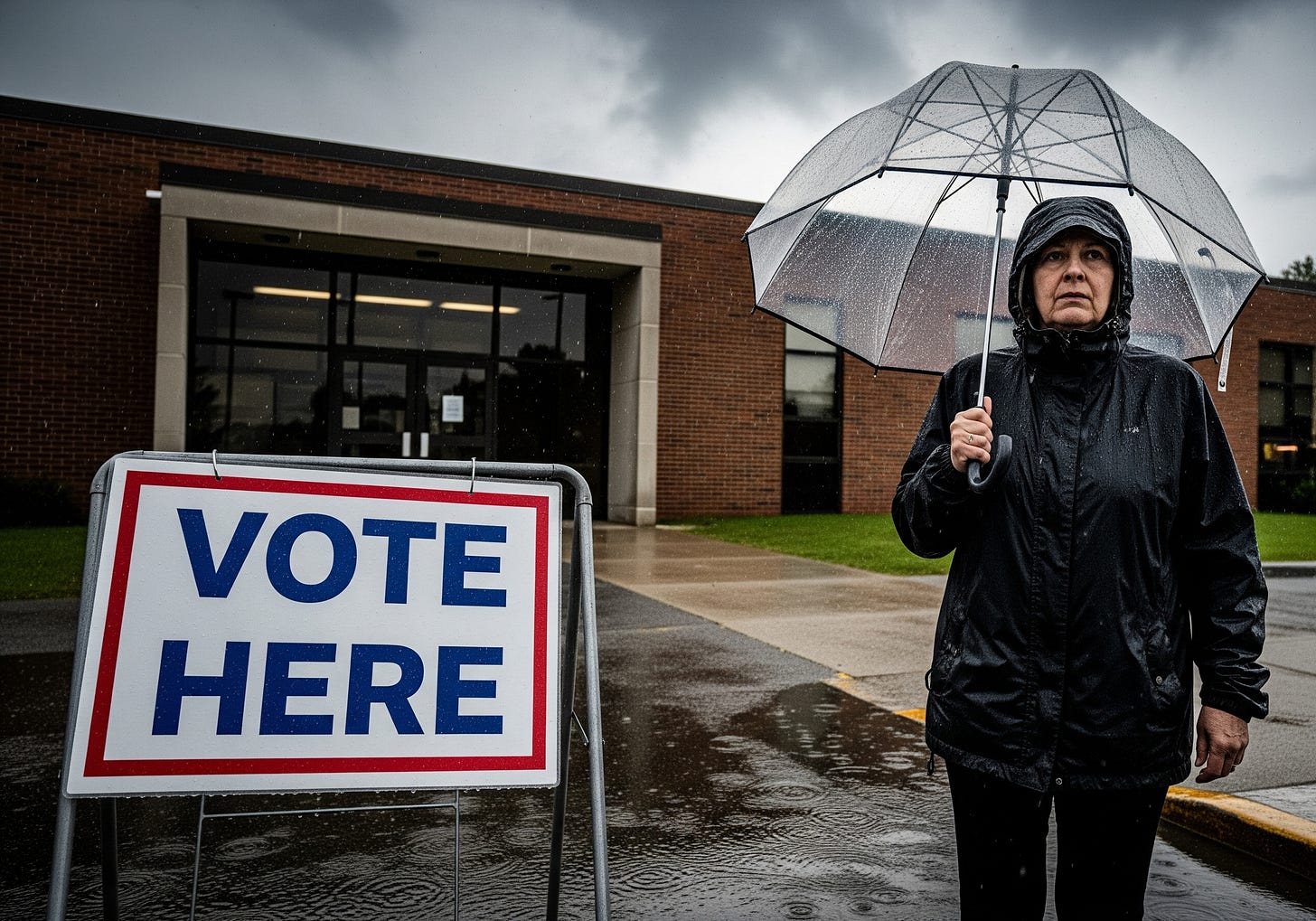How climate change ultimately favors Democrats
Extreme heat, green programs tend to lead to more left voting, new research says
This column is available today to all our readers. We’re having a big Labor Day Sale. So, so if you’re a free subscriber, upgrade now to get the best deal and the best climate finance coverage.
(Mark Hulbert, an author and longtime investment columnist, is the founder of the Hulbert Financial Digest; his Hulbert Ratings audits investment newsletter returns.)
CHAPEL HILL, N.C. (Callaway Climate Insights) — The probability that the U.S. House of Representatives will pass a carbon pricing bill in 2050 is 9% higher than today.
I know, I know. Predictions are difficult, especially about the future. But this particular prediction doesn’t come from just anyone. It comes from a sophisticated academic study by respected researchers.
A 9% higher probability in 25 years seems depressingly modest, given projections of how much hotter the climate will be in 2050. But you may nevertheless find some solace in the study’s implication that the current administration’s backtracking on environmental policy will only be temporary.
The new study, titled “Climate Politics in the United States,” began circulating earlier this month in academic circles. It was conducted by Matilde Bombardini, Frederico Finan, and Francesco Trebbi of the University of California, Berkeley, and Suresh Naidu and Nicolas Longuet-Marx of Columbia University.
Voting patterns, weather, green jobs count
The researchers arrived at their projection by combining and analyzing a large number of otherwise distinct databases, including those containing localized data on temperature and precipitation fluctuations, Congressional votes, precinct-level voting patterns across the U.S., localized data on employment in “brown” and “green” industries, and the climate policies supported by both winning and losing candidates in each of several decades’ Congressional elections. Armed with this omnibus database, they discovered significant correlations between climate and green employment on the one hand and, on the other hand, voting patterns in Congressional elections and the policies supported by the candidates.
To illustrate the precision and specificity of the conclusions that these correlations allowed them to make, consider the impact of an increase in the number of extreme heat days. When that number increases by eight days in a given year, the Democratic margin in subsequent Congressional elections increases by 0.90 of a percentage point, on average. Or consider the impact of brown and green employment: When the share of local employment in green jobs increases by 1.75 percentage points, the Democratic vote margin increases by 0.34 percentage points, on average.
To determine what these correlations mean for the future, the researchers relied on projections of climate change and employment trends over the next couple of decades. For the climate, they relied on NASA’s Earth Exchange (NEX) Global Daily Downscaled Projections (GDDP) database, which contains detailed temperature and precipitation projections for each 25 kilometer by 25 kilometer grid around the world. For employment projections, they relied on the Bureau of Labor Statistics’ Occupational Outlook Handbook, which projects job growth for various industries and sectors.
Do you want more climate finance news that’s both relevant and actionable? If you’re a paid subscriber — thanks. You make our work possible. If you’re a free subscriber, don’t miss this opportunity to upgrade your plan with our great Labor Day sale and get all the news, columns and stories from Callaway Climate Insights. For a limited time, you can subscribe for less than $5 a month for the first year. Take advantage now to get the best of our daily global climate analysis. Please subscribe with our special Labor Day sale offer.
The consequence, according to their complex econometric model, was to “raise the probability that the House [of Representatives] will pass a carbon-pricing bill by roughly 9 percentage points in 2050 relative to 2020.”
To put this result in context, consider that the House of Representatives in 2009 did pass a cap-and-trade system for carbon pricing. It was contained in the “American Clean Energy and Security Act of 2009,” which passed by the narrow margin of 219 to 212. It failed in the Senate, however, and undoubtedly the legislation would not secure approval today even in the House of Representatives. It’s therefore unclear whether a 9-percentage-point increase in probability of passing, relative to current probabilities, would be enough for the House to pass a carbon pricing system in 2050 — much less the Senate and be signed by the president.
That’s depressing.
Look on the bright side
Nevertheless, Bombardini said in an interview, there are some bright spots in their findings. For example, it would have been even more depressing had she and her fellow researchers found that climate change had no statistically significant impact on voting patterns. In other words, even though political change on the climate is maddeningly slow, over the long term it will move in the right direction.
To paraphrase the famous quotation from Martin Luther King Jr., the arc of political evolution on the climate is long, but it bends towards net zero.
Read more from Mark Hulbert:
Sustainable energy stocks’ surprising year-to-date performance
Investors might be measuring climate risk at some companies all wrong
Follow us . . . .



And that's why we need to ensure the lies about a climate crisis are exposed